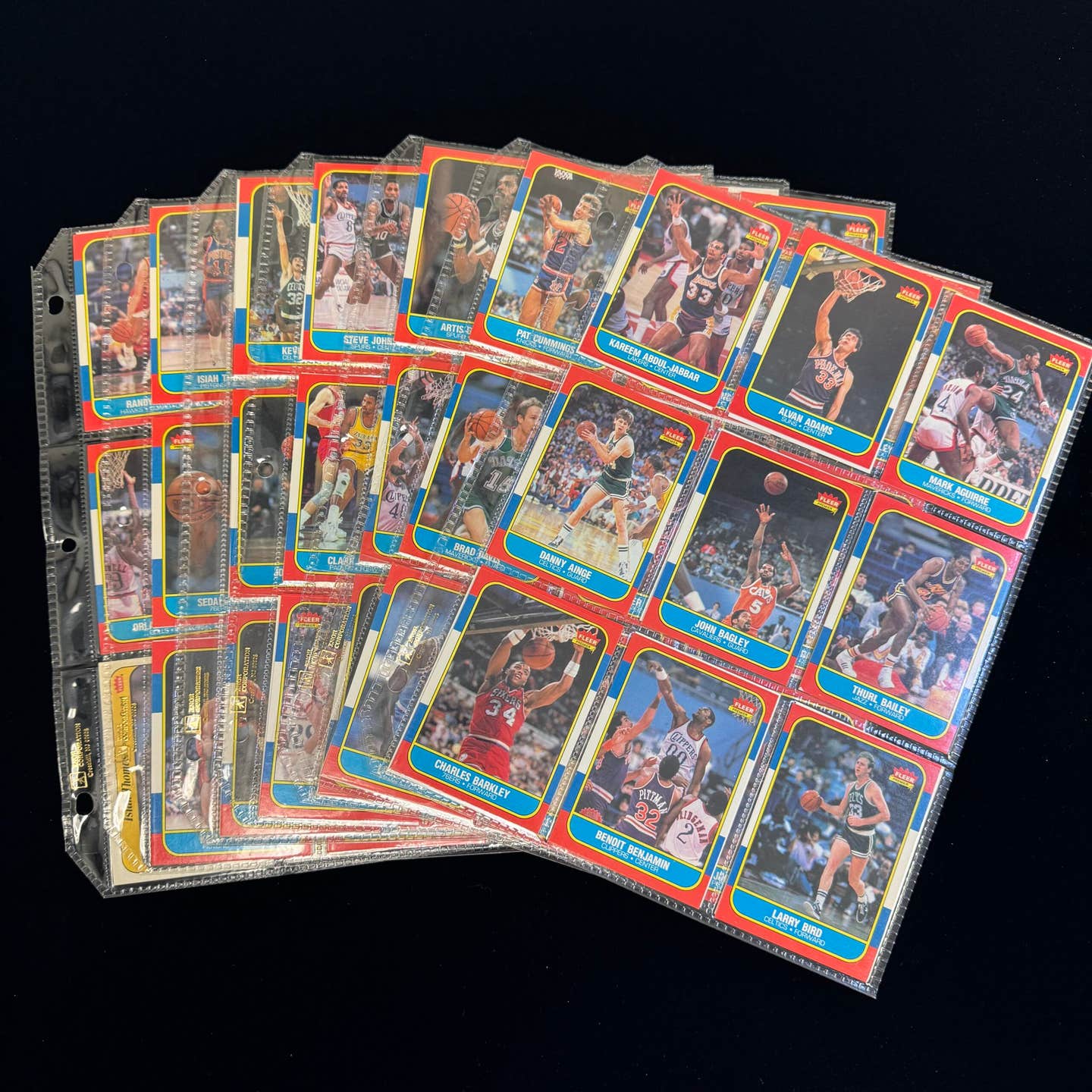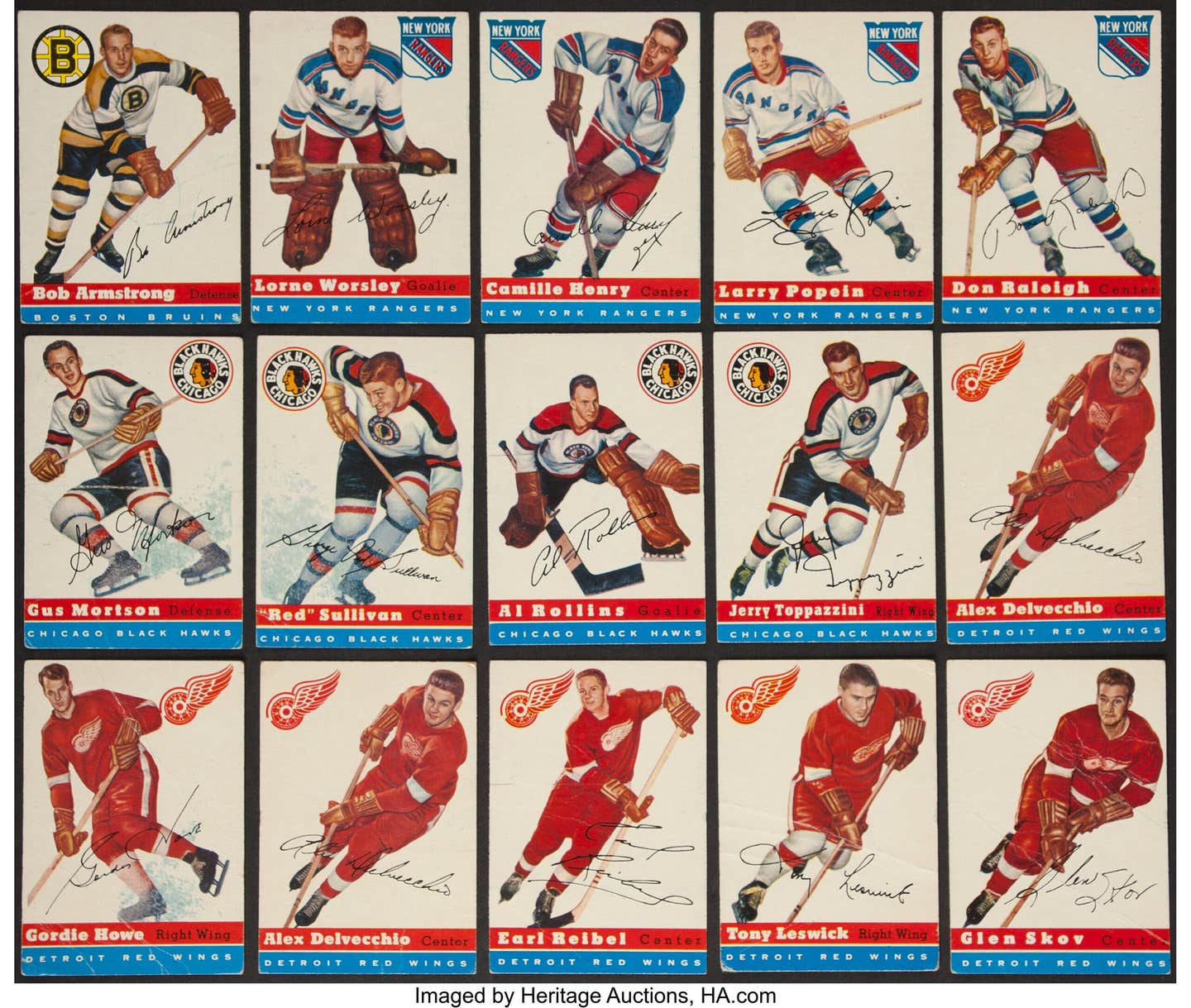News
The world of Jefferson R. Burdick; Research sheds light on some mysteries
By George Vrechek
Society for American Baseball Research (SABR) Director of Operations Jeff Schatzki contacted me recently to see if I knew of any Jefferson Burdick family members. SABR had awarded Burdick one of their annual Henry Chadwick Awards honoring baseball’s great researchers.
In 2005, Burdick’s great niece, Betty Clark, contacted me about visiting Burdick’s 306,000-card collection, which he donated to The New York Metropolitan Museum of Art. My efforts to contact her since had been unsuccessful. I recalled that she had never met Burdick, but had a photo of him and several postcards he created.
I have tried to read everything about or by Burdick, and I have written 13 articles for Sports Collectors Digest on Burdick starting with my first Met visit in 2002. I interviewed three people who met Burdick: Lionel Carter, his wife Irma Carter and Bill MacKay. However, what I knew about Burdick’s family and his life outside the hobby was little. Some articles about Burdick, including some of my own, have either tried to fill in blanks about Burdick or have repeated information that wasn’t exactly correct. Schatzki’s inquiry challenged me to see what else I could find about Burdick, and how his family and environment related to his collecting.
First impressions
Collectors who had met Burdick praised his honesty, dedication and organization, but commented that first appearances were deceiving. MacKay described meeting Burdick in the late 1950s, “An elderly man appeared; tall, but spent by age; slender; and mentally alert….He had slender hands which he moved nervously.”
Lionel Carter wrote about his first meeting in 1952, “He was badly crippled and to walk proved an effort. His arms hung at odd angles from his body, he could not even straighten his neck.”
Irma Carter described him to me as “odd.”
A Syracuse Post-Standard 1997 article by Sean Kirst included an interview with John DeFlores (1908-1998) who worked back-to-back on the same bench with Burdick at the huge Crouse-Hinds Company factory “piecing together detonators and intricate electrical parts.” (They were not electricians.)
DeFlores stated, “He was picked on his whole life….He always kept to himself.”
Kirst wrote, “Burdick was thin, quiet, meticulous. Gruff factory workers found him peculiar. But DeFlores liked him.”
DeFlores called him a very generous man. Burdick trusted DeFlores enough to show him the treasured cards that dominated his small apartment. Another retired worker, Milton Juengel, expressed similar feelings.
Checking the records
By looking at census, selective service, marriage, death and property records, I was able to fill in some of the blanks I had about Burdick. Rereading his books, articles and letters filled in more. I contacted people in Burdick’s hometown of Central Square, New York, and tried to find his residences and any other relatives.
Town historian
Heather Stevens is a central Wisconsin native who moved to Central Square years ago, served as a village trustee and got interested in local history. She became the historian for the Central Square Community Historical Society. I talked to her about what she knew about Burdick. She said much of what she knew came from reading my articles on him. Local knowledge about him was scarce even though there are still Burdicks in the village.
She added, “His passion and determination are admirable especially due to the physical ailments he had. Yet, I think it is sad that he is such a mystery. There is so little I can find on him and his family. I know when I do talks about him, people, and even students, are so impressed that someone like that came from our area.”
Finding relatives and the farmhouse
In 2012, Ken Belson of The New York Times asked me about family members when writing an article on digitizing Burdick’s collection at The Met. I had given him what information I had about Burdick’s great niece, Betty Clark. Betty’s grandmother, Beatrice G. Burdick (1893-1975), was Jefferson Burdick’s sister. Thanks to Belson’s efforts in April 2018, I found that 55-year old Betty Clark was now Elizabeth Taorima.
However, thanks to Stevens, I learned that Steven and Dawn Burdick live on the same street in Central Square where Burdick once lived. I talked to them and found that they had just recently learned that Steven Burdick is related to Jefferson Burdick. His grandfather, Myrl L. Burdick (1884-1959), was Jeff’s half-brother.
What I found in my research is not likely to be 100 percent accurate, since records can be inconsistent or incorrect and memories can be inexact, but what I learned about Burdick’s life helped me understand him more.
Central Square
Jefferson R. Burdick was born in 1900, near Central Square, New York, a farm town 20 miles north of Syracuse. Central Square is a village within the town(ship) of Hastings, New York, one of 22 town(ships) in Oswego County.
The village started in 1815 as a stagecoach stop and tavern built at the intersection of two roads. A store, hotel and blacksmith shop followed. Burdick’s father was a dairy farmer and lived on what was known as Burdick Road 1.7 miles southwest of the center of the village of 364 people.
Central Square is still small with 1,800 people and sits at the junction of two old roads and railroads, and is three miles from Lake Oneida and the route of the New York State Canal System, successor to the Erie Canal. Interstate 81 passes to the east of town where there is a Walmart. Burdick is buried between his parents at the Hillside Cemetery just north of the stoplight in town.
Extensive family tree
FamilySearch genealogy records have Robert Burdick (1630-1692) coming from England to Rhode Island in 1651. (The Mayflower arrived in 1620.) To give you an idea of the problems involved in tracing ancestors, just the name Robert Burdick was spelled Birdict, Berdick, Burdett, Burditt, Burdict, and Burdick in official records at the time.
Robert Burdick became a farmer and, like many early farmers in need of help, the larger the family the better. Robert and his American-born wife, Ruth Hubbard (1640-1691), were off and running populating the New World with 10 more Burdicks who slowly moved westward. Incredibly, each of Jefferson Burdick’s seven American great-grandfathers had between eight and 10 children. Today there is a Burdick Family Association website run by Howard Burdick, which has a database of 86,846 Burdick descendants.
Jefferson Burdick’s great grandparents, Russell and Elizabeth Burdick, settled on a farm near Central Square around 1818. Jeff’s grandparents, William (1824-1906) and Polly Catherine Yerton (1828-1891), took over the family farm. They had two sons who died in infancy, Emmett and Russell. Their oldest surviving son of nine children was William Henry Burdick (1861-1928), who took over the farm from his father. William Henry Burdick married Ida J. Hall (1861-1886) in 1879. In 1882 they had a girl, Alta, who died in 1888. Myrl L. (1884-1959) was their second child. Ida Hall died in 1886 and William remarried Mary Elizabeth Nann (or Naun) (1863-1929) in 1888. Elizabeth’s ancestors came from Germany. Their first child was Beatrice G. (1893-1975). In the 1890s, it appears there were three generations of Burdicks all in the same farmhouse on Burdick Road. The old farmhouse still stands and its current address is 277 Dry Bridge Road.
Jefferson R. arrives
Our best information is that sometime around 1900 or slightly before, Jeff’s parents and his sister Beatrice moved to a new house a mile closer to town along Burdick Road; the current address is 110 Mohawk Ave. Jeff’s half-brother Myrl stayed with his grandparents in the original farmhouse, continued working on the farm and eventually took over the farm, being the oldest son. Jefferson R. Burdick was born February 25, 1900, and was the last of William’s four children. We don’t know for sure what the R. stands for, but Stevens and I bet that it is Russell. Jeff’s sister Beatrice married in 1909 and had a daughter who died in 1910. The 1910 census shows Beatrice and her daughter living with Jeff and their parents. Beatrice remarried in 1916. Jeff remained with his parents and never married.
Childhood memories
In the 1960 American Card Catalog, Burdick mentions the “quaint life of a small boy” and “the serenity of a quiet country life.”
Burdick wrote, “Evenings and Sundays presented problems in unoccupied time, especially when winter weather kept everyone indoors.” (Central Square is 20 miles from the eastern edge of Lake Ontario. Snowfall in the area runs about 120 inches per year, on par with many Western ski areas.) It is unlikely Burdick’s home had electricity until about 1914.
Burdick wrote, “From somewhere I inherited a love of pictures.” People hungered for pictures, a window to the past. As they became more available, “Every succeeding generation became more forgetful and the old pictures lost their sentimental value.”
He retained about 100 each of post cards, tobacco cards, soda cards and a few advertising issues in 1910, which coincided with the American Tobacco Company’s return to insert cards. According to a 1955 Burdick interview in The Syracuse Herald-American, “He asked his father to smoke different brands of cigarettes so he could get different cards.”
Burdick attended a “little red school house about a mile away at a fork in the road” according to postcard collector David Keever in 1963. Burdick graduated in 1918 from Central Square High School, a mile from his home. The school building is still standing and his “permanent record” is on file in the school office.
Burdick likely had knowledge that his family had been farmers in the Northeast since the 1600s. Family traditions and American history were integral to his background.
Off to Syracuse
In September 1918, Burdick registered for the draft and was listed as medium height, slender build, blue eyes, dark brown hair, no excluding conditions. His occupation was auto mechanic for Wightman & Penoyer, a Ford dealership in the little town. Interestingly, it has been reported that he never drove. The 1920 census showed him still at home as a farm laborer, likely helping his father or half-brother milking cows by hand every day. My grandfather had a similar option on a dairy farm in Europe. He chose to come to the United States instead. Burdick chose to head to Syracuse that fall.
The New York Times found that Burdick earned a two-year general business certificate from Syracuse University in 1922. He was a member of Psi Upsilon fraternity and lived at 848 Livingston and 1203 Harrison near campus. I didn’t find any record of college attendance by others in his immediate family.
The 1925 census had Burdick living with both parents in a new location near the center of town, 628 S. Main Street, Central Square. Burdick’s occupation was listed as newspaper advertising solicitor for the Syracuse Herald, 20 miles away. According to Keever he worked at advertising there only four years.
Death of parents
In 1928, Burdick’s father died, and his mother moved to Syracuse with Jeff. Public records indicate that the bulk of the estate of $14,000 ($200,000 in today’s dollars) as well as the Main Street home went to Jeff and his mother. His mother died in Syracuse in 1929. Burdick sold his parents’ house in 1942.
It appears that Burdick inherited a significant nest egg. His half-brother Myrl wound up with the farm and the home at 110 Mohawk, an arrangement apparently excluded from the estate. Beatrice Burdick Watkins, Jeff’s sister, received $600 from her father’s estate.
Collecting resumes
Burdick gives 1933 as the time when he got back into collecting in earnest (American Card Catalog, 1960). The Depression was well underway and Burdick may not have been employed. Burdick learned that he suffered from a severe form of arthritis which was slowly crippling him. Perhaps his inheritance helped him through difficult times and enabled him to start buying some collections. In addition to trading cards, he collected stamps and postcards.
In a 1961 letter to long-time CCB subscriber Carter, he wrote he had worked for Crouse-Hinds for over 23 years before retiring in 1959, which would mean he didn’t start there until 1935 at the earliest. Burdick may have had plenty of time for card collecting between 1933 and 1935, when it appears that he amassed a good portion of his collection. His first well-written article on collecting appeared in the December 1935 Hobbies magazine. Readers were encouraged to contact him at 417 S. Crouse Ave., a few blocks from his last college residence and three miles south of the Crouse-Hinds plant.
Articles and newsletter
Burdick wrote six articles for Hobbies between 1935 and 1937. He published his own Card Collectors Bulletin (CCB) in January 1937 for a handful of subscribers and cranked out eight bulletins by 1939. In 1938 he moved 1.5 miles away to 328 W. Willow St., and then back to Crouse Ave., explaining, “Present conditions do not seem to favor certainty in many things.”
He stopped the CCBs briefly to devote his efforts to the first catalog in 1939, The United States Card Collectors Bulletin. This catalog, which introduced the card identification system still used today, was incredibly detailed and professionally typeset; 500 loose-leaf copies were printed with 100 copies reserved for CCB subscribers.
In late 1939, he resumed publishing CCB bi-monthly with his own printing equipment. Based on his recent experiences, he advised collectors to run ads, tell friends about wanting cards, visit antique shops and correspond with other collectors, but not to waste much effort contacting manufacturers.
From the research, a picture formed in my mind that Burdick was highly intelligent. A grammatical error in something written by Burdick was rarer than a Honus Wagner card. He enjoyed being organized and, perhaps excessively, focused. His day job was spent doing dull, repetitive tasks. In the evenings he would do interesting, to him, repetitive tasks. He could relate easily to other collectors, but others might have viewed him as peculiar.
Part 2 of this article will appear in a future issue of SCD.
George Vrechek is a freelance contributor to Sports Collectors Digest and can be reached at vrechek@ameritech.net.








